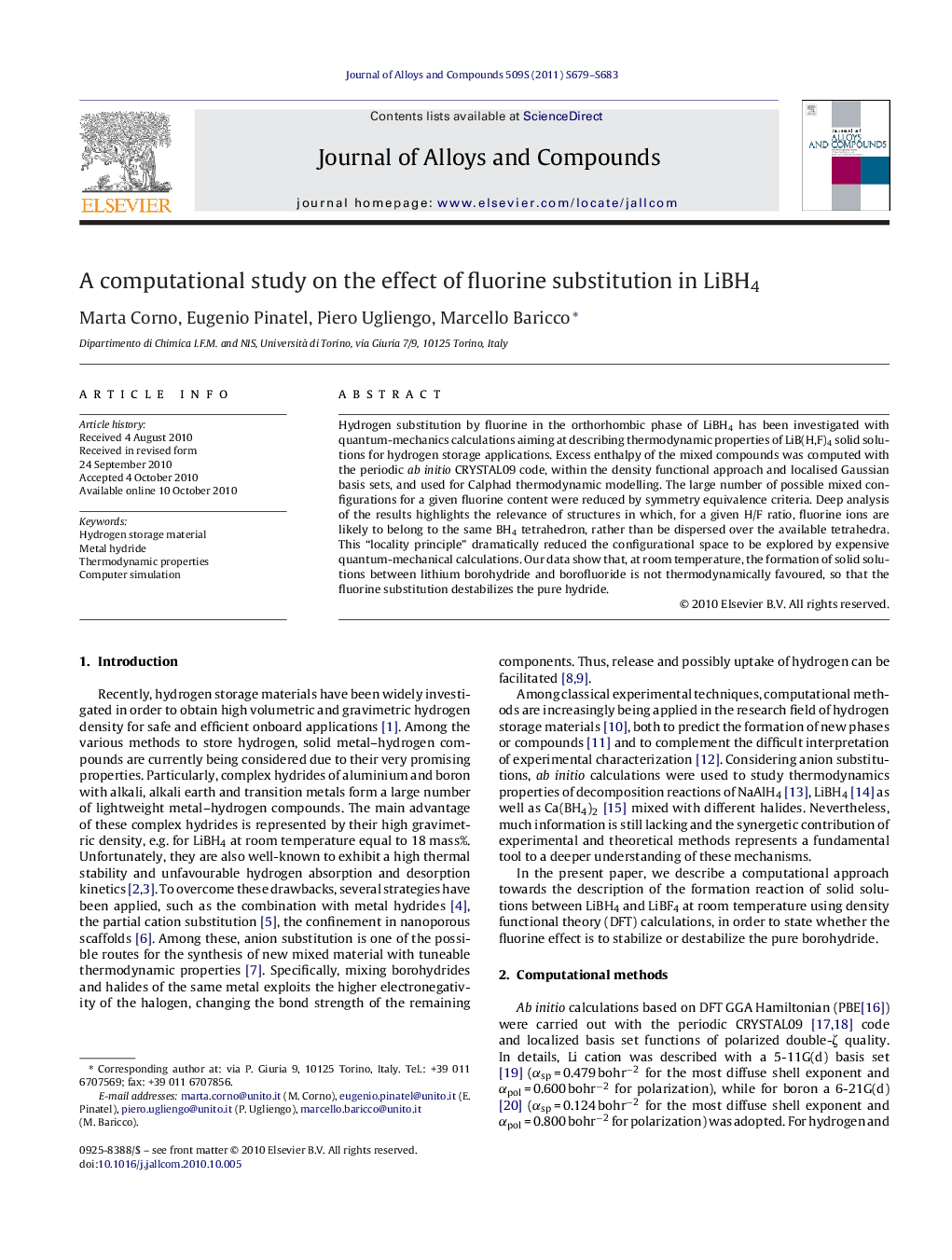| Article ID | Journal | Published Year | Pages | File Type |
|---|---|---|---|---|
| 1619586 | Journal of Alloys and Compounds | 2011 | 5 Pages |
Hydrogen substitution by fluorine in the orthorhombic phase of LiBH4 has been investigated with quantum-mechanics calculations aiming at describing thermodynamic properties of LiB(H,F)4 solid solutions for hydrogen storage applications. Excess enthalpy of the mixed compounds was computed with the periodic ab initio CRYSTAL09 code, within the density functional approach and localised Gaussian basis sets, and used for Calphad thermodynamic modelling. The large number of possible mixed configurations for a given fluorine content were reduced by symmetry equivalence criteria. Deep analysis of the results highlights the relevance of structures in which, for a given H/F ratio, fluorine ions are likely to belong to the same BH4 tetrahedron, rather than be dispersed over the available tetrahedra. This “locality principle” dramatically reduced the configurational space to be explored by expensive quantum-mechanical calculations. Our data show that, at room temperature, the formation of solid solutions between lithium borohydride and borofluoride is not thermodynamically favoured, so that the fluorine substitution destabilizes the pure hydride.
Research highlights▶ Combined ab initio and thermodynamical modelling study on the fluorine substitution in LiBH4. ▶ CRYSTAL09 code applied to compute structure, vibrations and thermodynamics of pure hydrides and fluorides and mixed systems. ▶ “Locality principle” established to select a limited number of configurations for each H/F ratio in the substitution. ▶ Computed enthalpy of mixing positive at room temperature meaning that solid solution formation is disfavoured.
